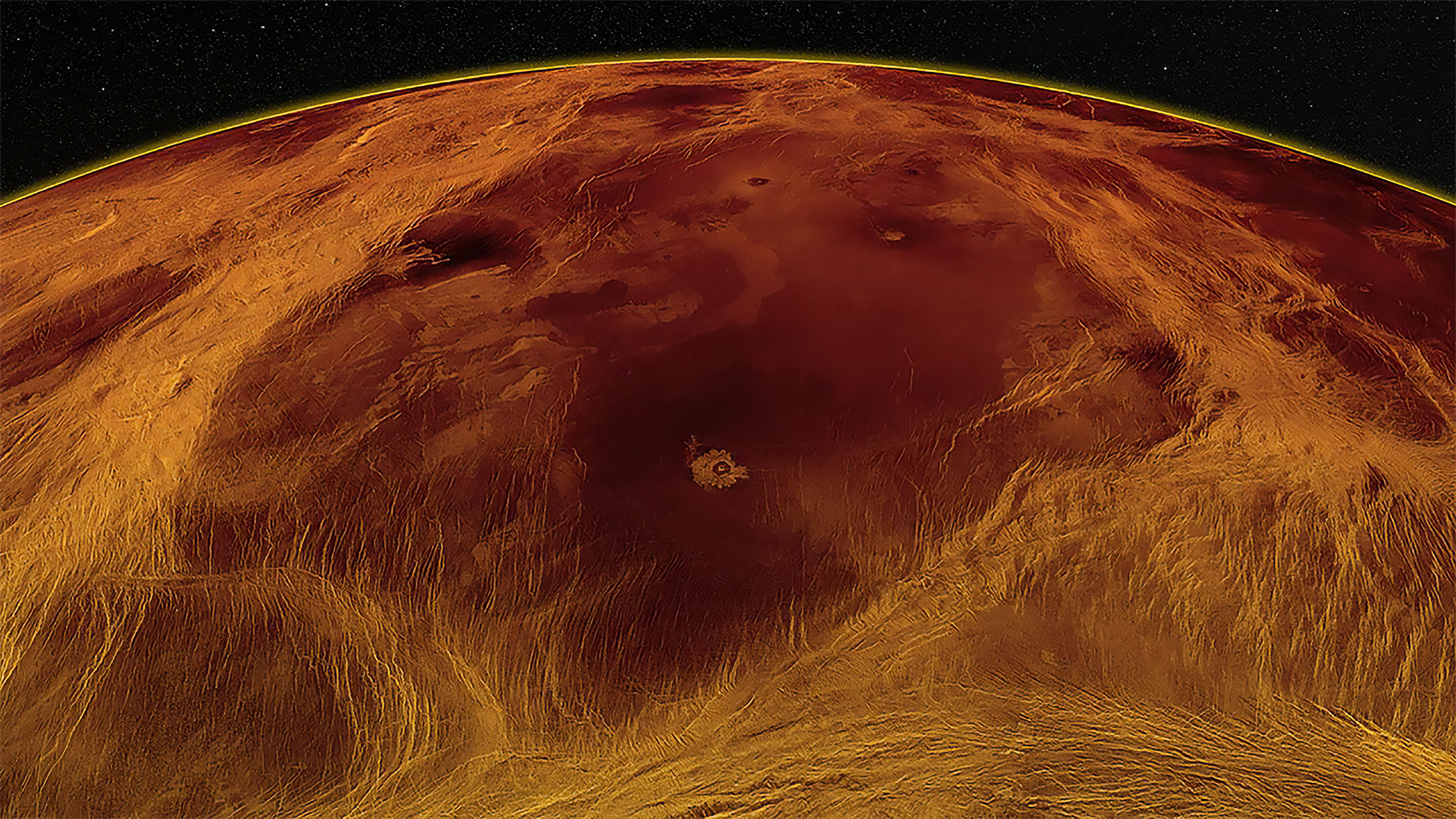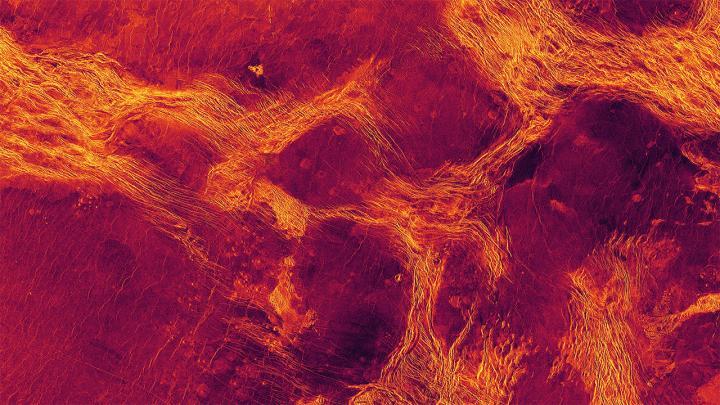Scientists might have spotted tectonic activity inside Venus
A new analysis of 30-year-old data suggests something strange is happening within Earth’s evil twin—and it could mean the planet is alive.

Venus might be hell, but don’t call it a dead planet. Amid surface temperatures of up to 471 °C and surface pressures 100 times greater than those on Earth, new research suggests the planet might still be geologically active. That’s encouraging news to people who think it could once have hosted life (or that it might still be able to).
Earth’s lithosphere (its crust and upper mantle) is made of “plates” that move around and crash into each other, resulting in mountains, deep ocean trenches, and volcanic and seismic activity. This tectonic activity also plays an important role in the carbon cycle, the processes in which carbon is released and reabsorbed in the ecosystem; by regulating the amount of carbon dioxide in the atmosphere, it has helped keep the planet cool and comfortable this whole time.
Thus far, scientists have never observed anything similar on Venus. But we’ve never been able to rule it out, because it’s hard to make scientific observations of the planet (its thick clouds obscure its surface, and any spacecraft we’d land there would most likely melt in a matter of hours). In the new findings, published in PNAS today, scientists think they’ve finally spotted evidence of a new type of tectonic activity on Venus.
The team used observations made by the Magellan probe, which orbited Venus from 1990 to 1994 and mapped the surface using radar. The features it spotted have been analyzed before, but the new study uses a new computer model that can recognize surface deformations indicating large block structures in the lithosphere. These blocks, each about the size of Alaska, seem to have been sluggishly jostling against each other like broken pack ice on a pond or lake.
This is quite different from the current type of plate tectonics on Earth. But if confirmed, it would nonetheless be evidence of heat currents and molten material in Venus’s interior—something that’s never before been observed. The authors think parallels with Earth’s geology during the Archean Eon (2.5 to 4 billion years ago) suggest that the “pack ice” patterns could be a transition from an earlier period of plate tectonics on Venus when the planet was more Earth-like.

This movement “is widespread across the Venus lowlands, and argues for a previously unrecognized style of global tectonics,” says Sean Solomon, a research scientist at Columbia University and a coauthor of the new study.
The findings only fuel more excitement behind the new Venus missions recently approved by NASA and the European Space Agency. Solomon says he and his team hope all three can provide “critical data for testing the ideas we’ve described in our paper.” Those missions won’t be ready to launch till closer to the end of the decade, so let’s hope the excitement doesn’t wane over the next several years.
Deep Dive
Space
How to safely watch and photograph the total solar eclipse
The solar eclipse this Monday, April 8, will be visible to millions. Here’s how to make the most of your experience.
How scientists are using quantum squeezing to push the limits of their sensors
Fuzziness may rule the quantum realm, but it can be manipulated to our advantage.
The great commercial takeover of low Earth orbit
Axiom Space and other companies are betting they can build private structures to replace the International Space Station.
Stay connected
Get the latest updates from
MIT Technology Review
Discover special offers, top stories, upcoming events, and more.